We were back in St. Augustine getting Thing 1 moved into her dorm for her second year at Flagler College. Since move-in was a much simpler process this year, we had the entire afternoon to do whatever we wanted. We decided to tour The Oldest House Museum and St. Augustine Distillery.
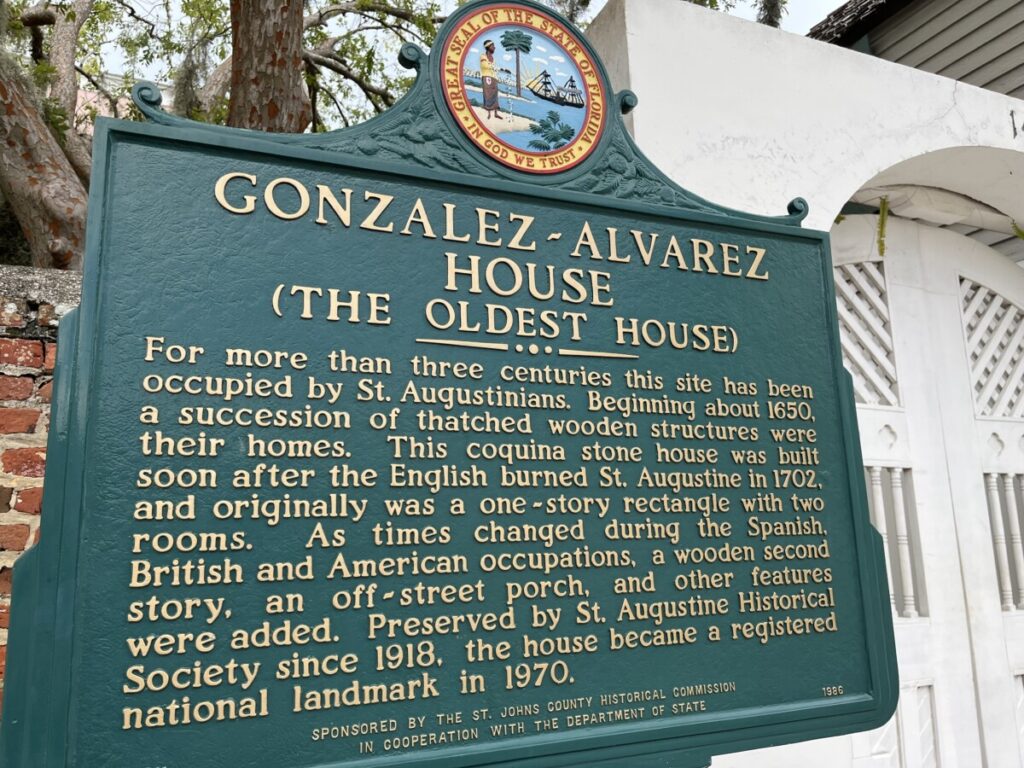
Oldest House Museum
The Oldest House Museum consists of a museum, gardens, and the Gonzales-Alvarez House. We arrived just in time for the last guided tour of the day!

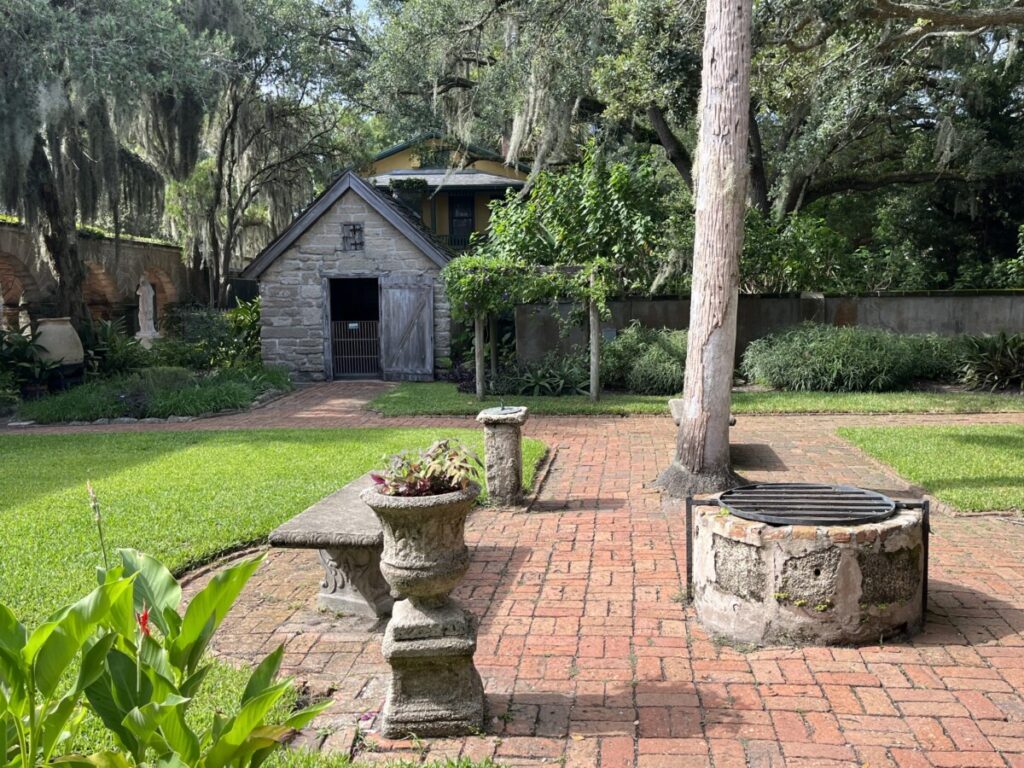
Our tour guide led us to the front of the house through a walled garden area. Back in the Spanish colonial period, houses didn’t feature front entrances along the street. Instead, guests entered a door located off of a side or rear garden area.
First Floor – 1700s Period
The first resident of the house, constructed around 1723, was Tomas Gonzales y Hernandez. Historic records reveal he came to St. Augustine from the Canary Islands as a young adult and served as an artilleryman for almost 40 years.
Built with thick coquina stone walls and tabby floors, like most of the early St. Augustine structures, the house originally encompassed one floor with two rooms. Inside, we saw a brazier (firepit) and a small, rudimentary dining room table, representing what the house would have looked like during the first Spanish Colonial Period in the mid-1700s.
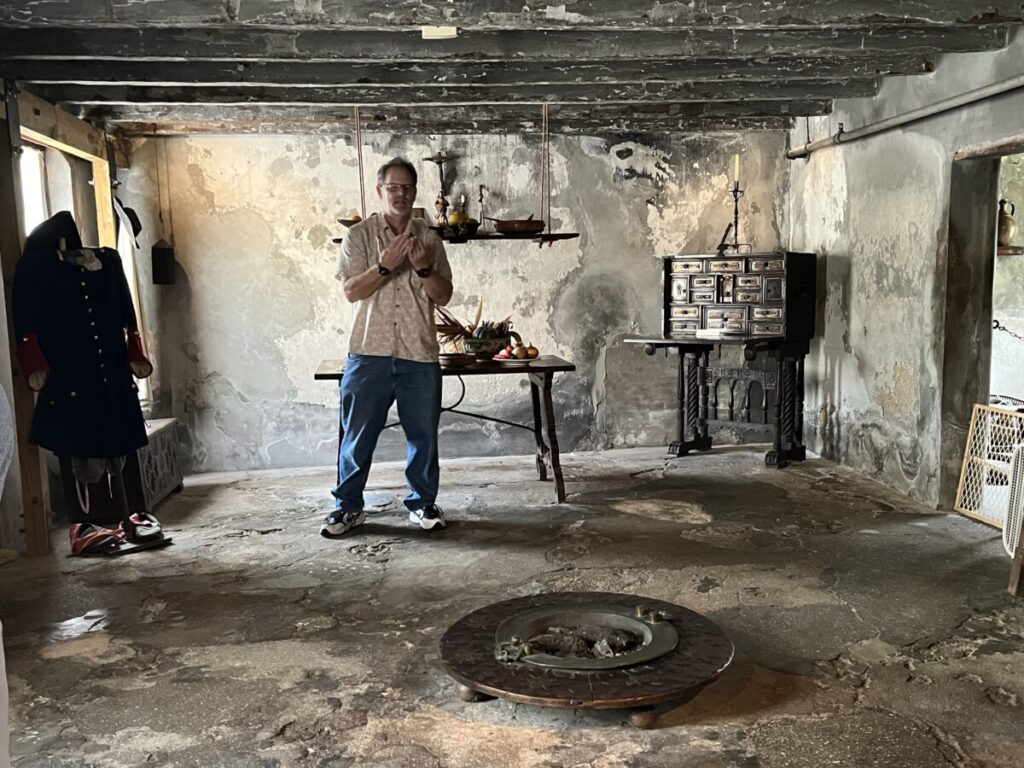
Our guide pointed out that the windows would not have had glass, but rather rejas (wooden spindles) and interior shutters for protection. A heavy wool uniform that Gonzales would have worn no matter the time of year stood off to the side.
Not much is known about the Gonzales family except that they lived in the house until 1763. At that point, the British took over St. Augustine and the family resettled in Cuba. The house remained empty until 1775 when British Major Joseph Peavett purchased it.
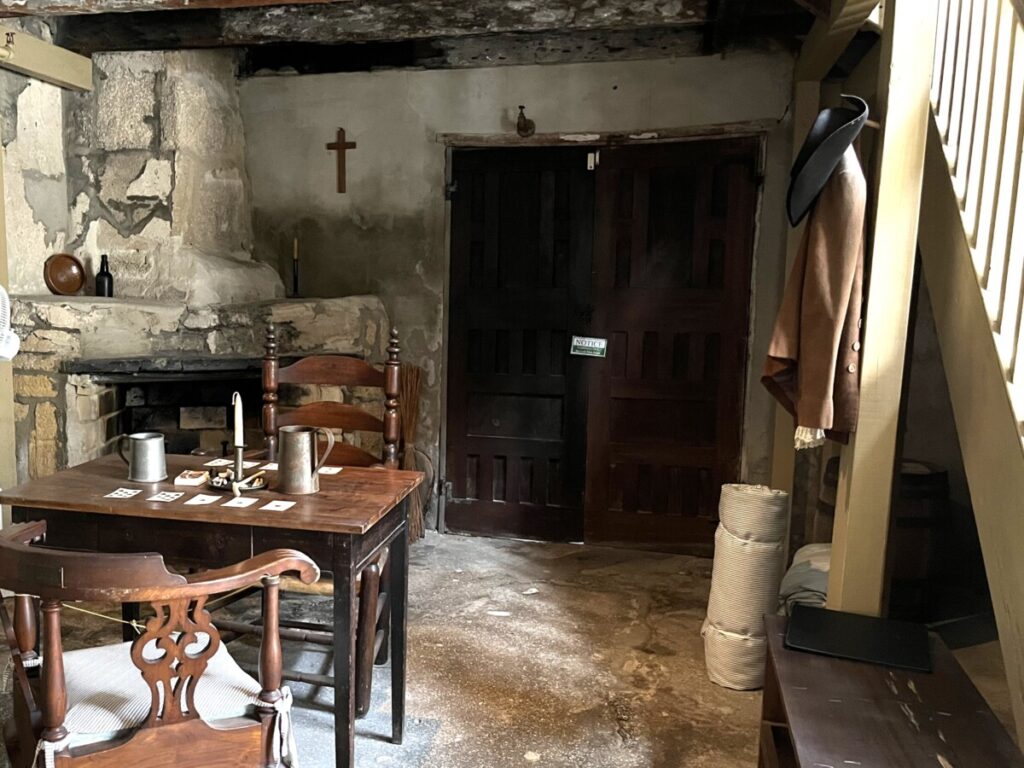
From 1775-1786, Peavett enclosed the windows with glass, built a chimney, and added an entire second floor. Before heading upstairs, we looked at the other end of the large room, representing the Peavett Era with the large fireplace.
Second Floor – 1800s Period
Much like the Pena-Peck House, the second-floor addition was built with clapboard siding. Much airier and lighter than the first floor, the upstairs addition boasted a large living area and a bedroom. With more room to spare, the first floor served as a tavern.
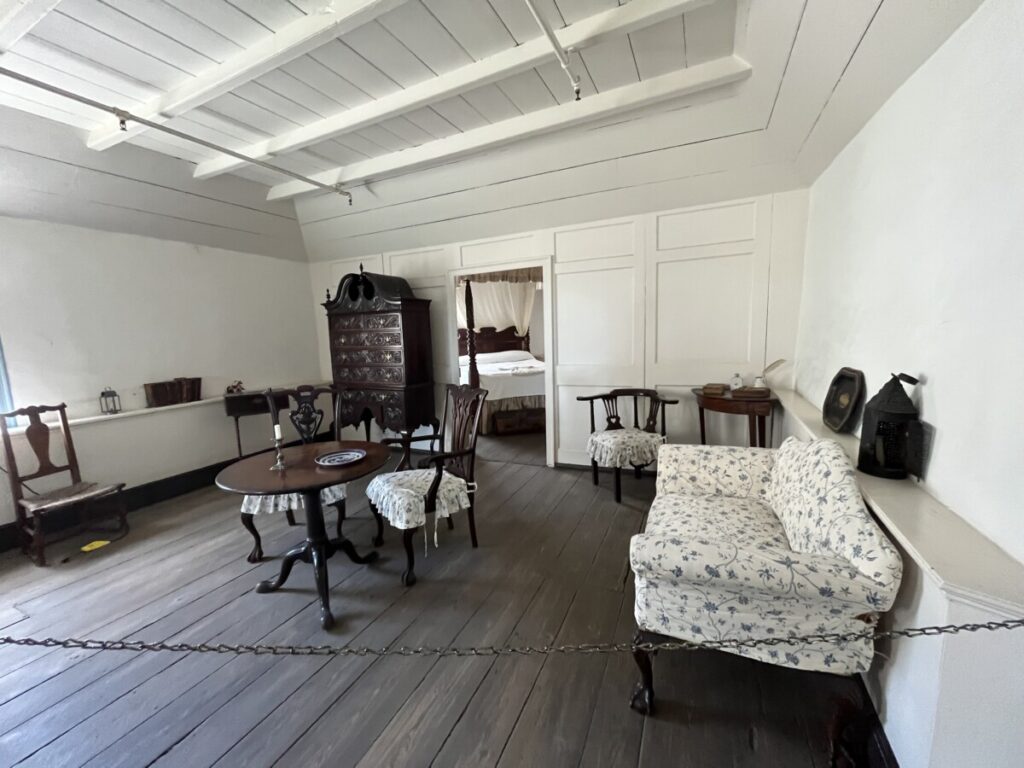
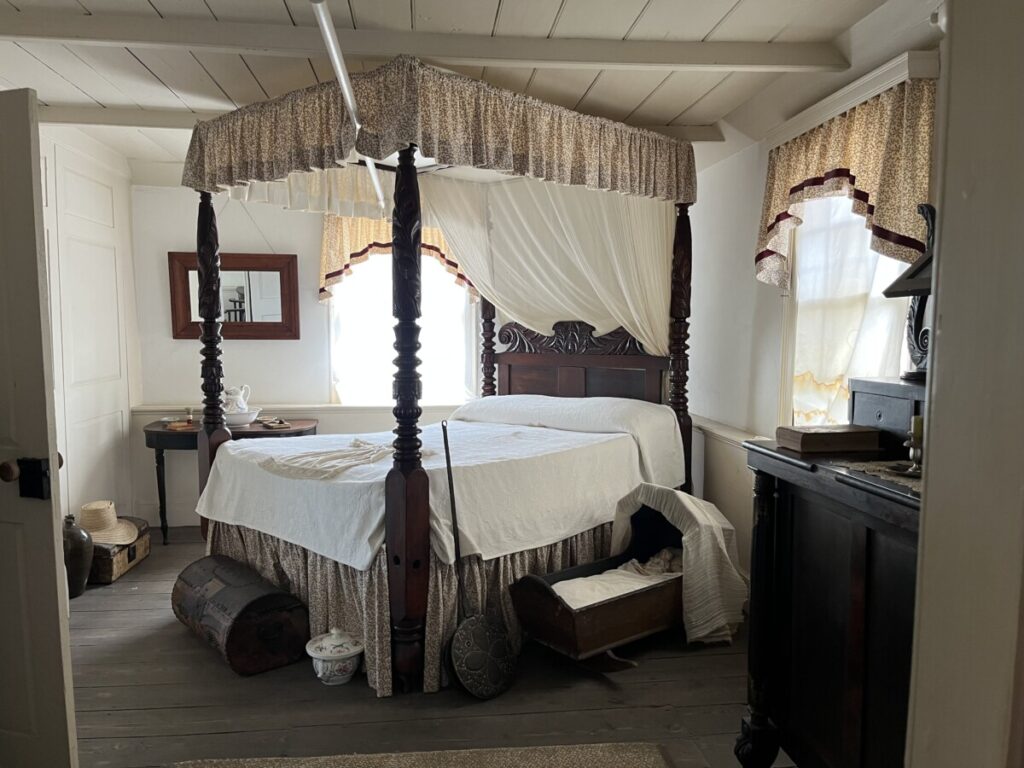
After Peavett’s death, Geronimo Alvarez purchased the house in 1792. During the second Spanish Period, Alvarez added a two-story coquina wing – three bedrooms upstairs and a chapel, loggia, and pantry downstairs.

Descendants of the Alvarez family stayed in the house until 1882. Dr. George Carver purchased the house and added a two-story round tower and another fireplace in 1886. He advertised the house as the “Oldest House” and started charging admission. After a series of owners, including George Reddington, founder of the present-day Alligator Farm, the St. Augustine Historical Society purchased the house in 1918. Over time, they removed the tower and wooden garage.
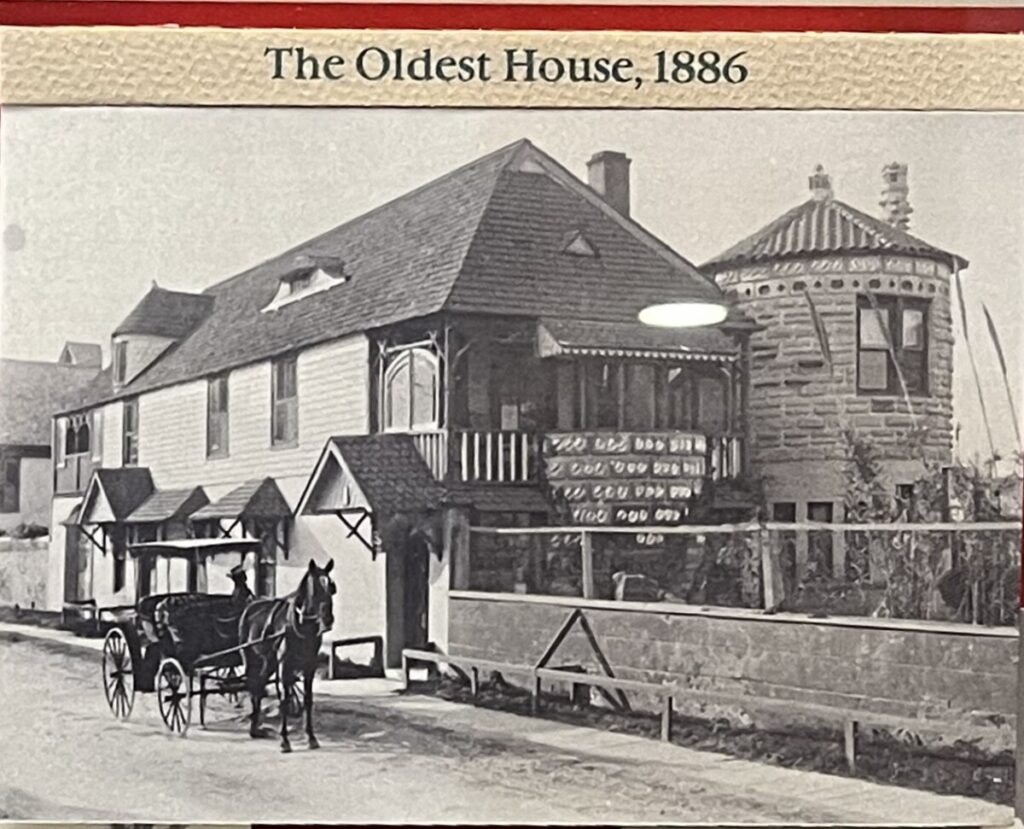
When we went back downstairs for the conclusion of the tour, we peered into the pantry that Geronimo Alvarez added next to the loggia. The room on the other side of the loggia served as a chapel. When Dr. Carver and his wife inhabited the house, they completely changed the room and covered the walls with heavy paneling popular in the Victorian era.
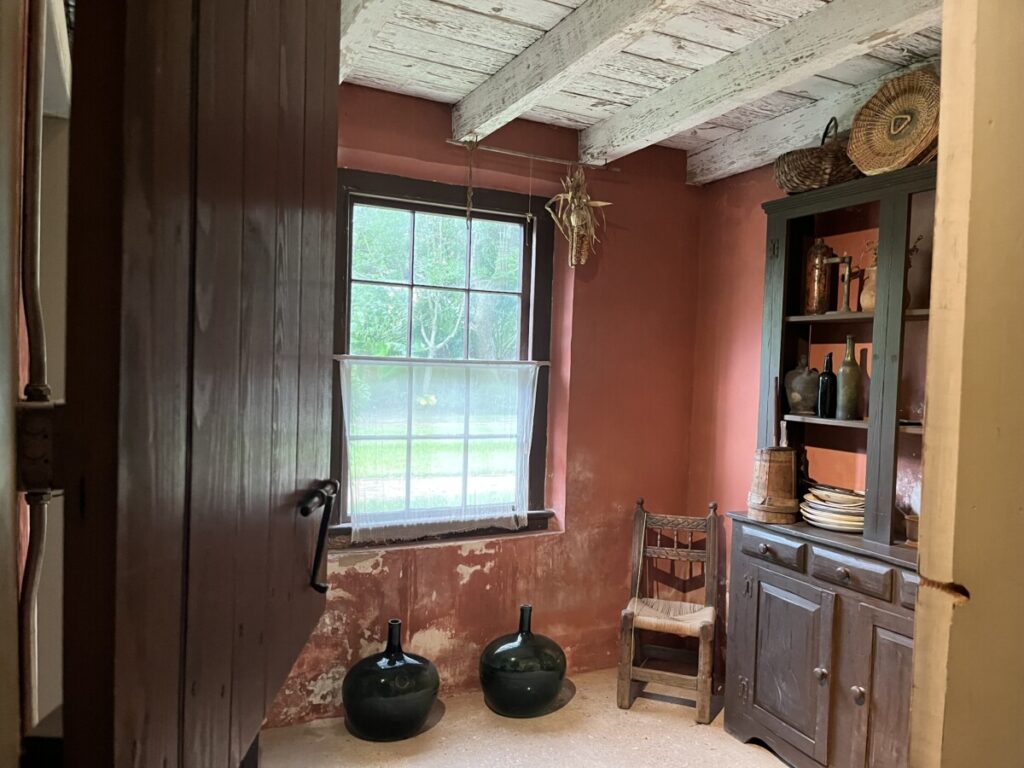
On the loggia, our guide showed us how early residents purified water. Drawn from the well, water would be poured into a pumice basin. Acting as a natural filter, the volcanic rock decontaminates the water as it drains to the bowl placed on the ground below.
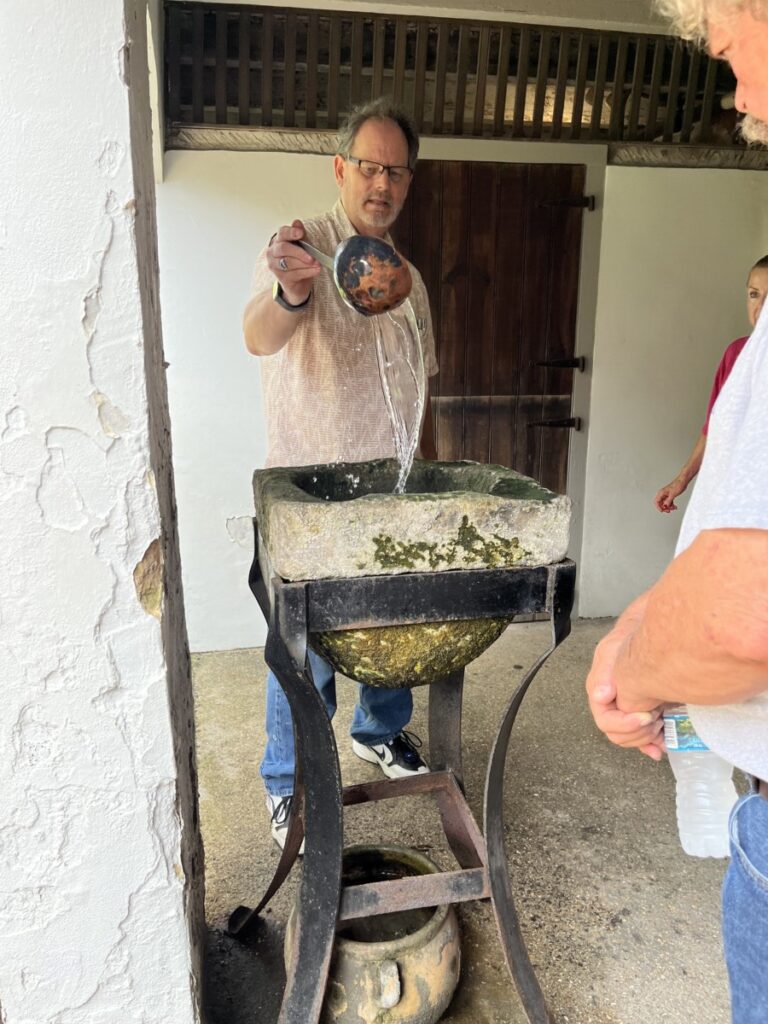
After the tour, we had a few minutes to look through the museum exhibits in the adjacent Webb House before closing time. While we didn’t have time to visit the 1791-built Tovar House, also part of the Oldest House Museum complex, it hosts the St. Augustine Surf Culture and History Museum.
Conclusion
So is the Gonzales-Alvarez House really the oldest house? Not in the United States. That honor belongs to the 1641- built Fairbanks House in Massachusetts. But as far as being the oldest house in St. Augustine, and even in the state of Florida, experts mostly agree on the Hernandez-Alvarez House.
For more information, visit the website here.
